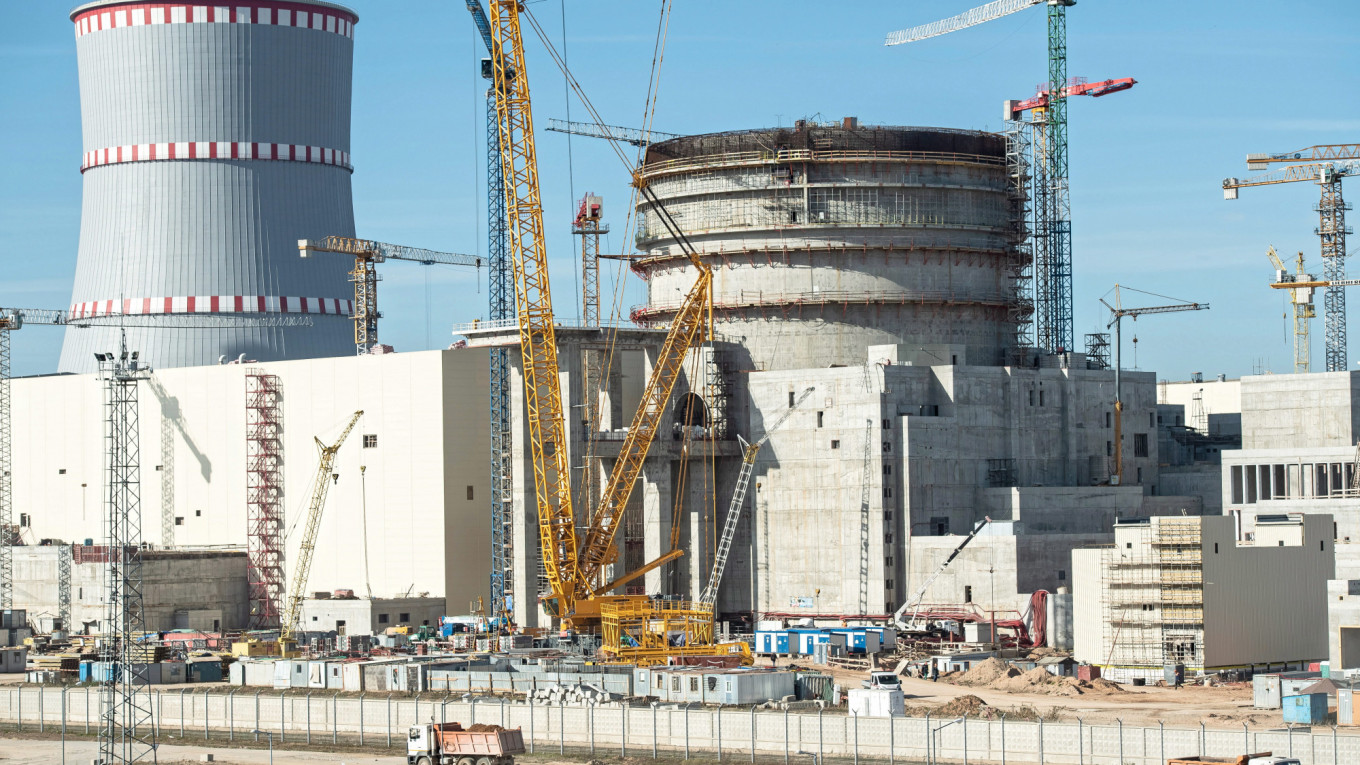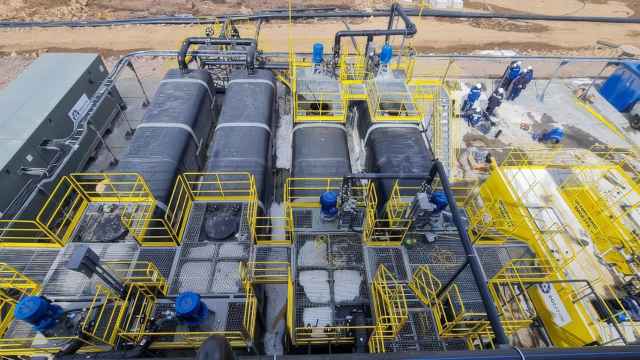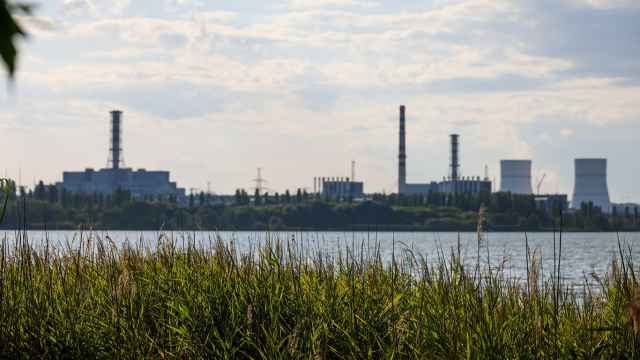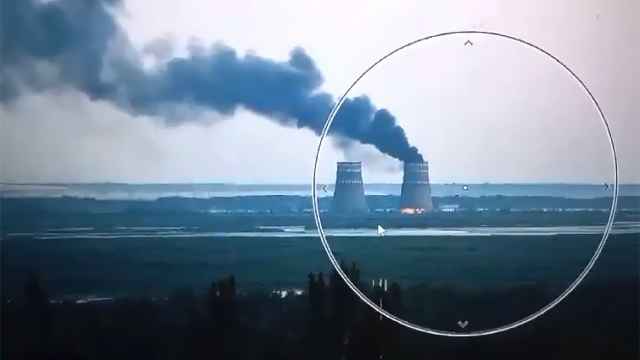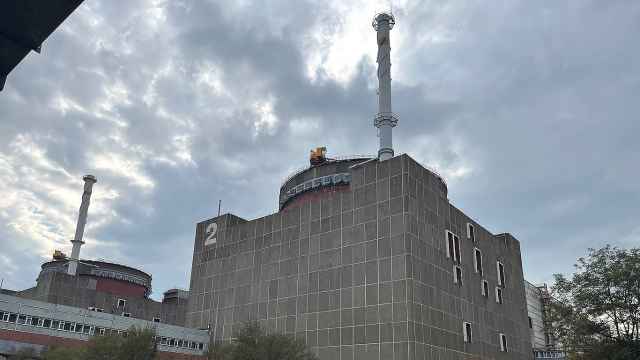Russia’s state-owned agency Rosatom is on a tear. The company operates 35 nuclear power stations in Russia that produce 28 gigawatts (GW) of power, and it is actively exporting its nuclear technology to countries around the world.
Russia has been using nuclear power plants as a way of cementing ties with its fellow emerging markets with no nuclear power tradition and the BRICS countries, a group that started as a marketing tool for Goldman Sachs to sell equity but has increasingly turned into a real geopolitical alliance amongst the leading emerging market governments.
In recent years Rosatom has completed the construction of six nuclear power reactors in India, Iran and China and it has another nine reactors under construction in Turkey, Belarus, India, Bangladesh and China. Rosatom confirmed to bne IntelliNews that it has a total of 19 more “firmly planned” projects and an additional 14 “proposed” projects, almost all in emerging markets around the world.
Rosatom has become the world's largest nuclear reactor builder as the financial problems of the two big Western firms Westinghouse Areva have crimped their ability to develop nuclear plants abroad. Westinghouse and Areva, now owned by EDF, have for years negotiated deals to build reactors in India but have made little progress, partly because Indian nuclear liability legislation gives reactor manufacturers less protection against claims for damages in case of accidents.
The sales drive was organised by former Prime Minister Sergei Kiriyenko, who presided over Russia during the 1998 financial crisis but was given the job of running Rosatom after leaving office and tasked with selling 40 nuclear power plants internationally.
The world just marked the thirtieth anniversary of the Chernobyl disaster on April 26, however, those ill-fated RBMK-type reactors have long ago been ditched and replaced by the third generation VVER 1200 (water-water energetic reactor) that are compliant with the IAEA’s International Nuclear Safety Group (INSAG) recommendations and general considered to be safe.
Part of Rosatom’s appeal is not only Russia’s lower prices and state-of-the-art technology, but the fact that company usually provides most of the financing for the typically $10 billion price tag.
Last year the Russian firm said it had an order book worth $134 billion and contracts to build 22 nuclear reactors in nine countries over the next decade, including Belarus, Bangladesh, China, India, Turkey, Finland, Hungary, Egypt and Iran. The size of the order book puts nuclear power station exports on a par with Russia’s booming arms export business.
But underpinning the business is politics. Russia has long used energy as the sweetener when offering a package of trade deal to its international partners. Like gas pipelines, nuclear power stations are a way of binding countries to Russia, as nuclear power stations come with 60-year long maintenance deals and uranium supply contracts.
For their part, Rosatom’s customers are keen to diversify their energy supplies away from price-volatile oil and gas and for many the only viable alternative is nuclear power. The new stations under construction in Belarus and Turkey, for example, will dramatically alter the energy make up of both countries, which are both currently almost entirely dependent on the import of Russian oil and gas.
Iran Bushehr
One of the most controversial nuclear power stations built by Moscow was Iran’s Bushehr that was completed in 2013 over strong U.S. objections.
Now the two partners are planning an extension. Tehran and Moscow signed a contract for the expansion of the Bushehr nuclear power plant in 2014, a year after Russia got the first phase up and running, but both sides put the second project on the back burner until recently.
Plans for the power plant appeared as early as 1975 under Iran’s last Shah, Mohammad Reza Pahlavi, with US and German contractors involved. Subsequent to the 1979 Islamic Revolution, work on the project only got going again after the Islamic Republic signed a contract with Russia in the 1990s, but construction didn't start until 2011.
Russia has been producing new parts for the second nuclear power plant to be built at Bushehr on the Persian Gulf and now Russia is preparing to push ahead with the construction of the second unit.
Bushehr-2 has been on the cards for several years, and is due to be completed by 2020 when it will produce 1,000MW of electricity for the southern areas of the country.
The expansion is part of a larger deal that was signed in September 2017 between Russia’s state-owned VEB.RF (formerly Vnesheconombank) and Iran’s Bank of Industries and Mines (BIM) that also includes a thermal power plant in southern Hormozgan province costing €1.2 billion. In all VEB is offering €2.2 billion for energy investments over a period of five years.
India Kudankulam
India is one of Russia’s oldest clients and already has two operational nuclear power reactors with two more are under construction.
In October Putin and Indian Prime Minister Narendra Modi signed a pact to build six more nuclear reactors at a new site with a total of eight proposed projects under discussion, according to Rosatom.
At the time Rosatom said Russia would offer to build its third-generation VVER reactor on the new site, which has not been named yet, and would increase the level of participation of Indian companies in the project. The selection of the site is already proving controversial, as the country has seen vehement protests against new nuclear sites.
Two Russian-built VVER-1000 reactors have been in commercial operation in Kudankulam, southern India, since 2014 and 2017 respectively. Construction on two more started last year with a target for commercial start-up in 2025 and 2026.
Last year, the Russian and Indian governments signed an agreement to build reactors 5 and 6 on the site and Putin said at the time that Russia is ready to build a dozen reactors in India over the next 20 years.
Hungary Paks
Hungary and Russia agreed to change the loan agreement for the expansion of Hungary's sole nuclear power plant Paks, local media reported on May 6. Hungary will start repaying the loan once the two blocks are connected to the grid and begin production.
Hungary signed a separate agreement with Russia, which is financing €10 billion of the €12.5 billion project. Rosatom was selected to add two blocks to the Paks plant in 2014 — the largest ever investment in Hungary — which will increase capacity by 2,400Mw and is supposed to go online in 2025-2026, but the government commissioner for the expansion acknowledged that the project two years behind schedule.
Belarus Grodno
Belarus is also building a Russia-made reactor that will dramatically reduce its near total dependence on Russian gas imports for energy that has been the source of constant bickering this year.
However, the cash-strapped government is already running into trouble in finding money to pay the bill and was seeking a restructuring of Russia's $10 billion loan for the construction of its first nuclear plant, to be built in the Grodno region, some 10 kilometers from the Lithuanian border.
According to the nation's Energy Minister Viktor Karankevich, Minsk and Moscow are discussing an extension of the term of the loan from 25 to 35 years, as well as a reduction of interest.
"The issue is under discussion. The matter is also considered at the level of the Finance Ministries of Belarus and Russia," state news agency BELTA quoted Karankevich as saying on April 4.
In September 2018, Belarusian President Alexander Lukashenko said that the Belarusian authorities had urged Russia to restructure the $10bn loan due to the fact that the launch of the first nuclear plant unit "has already been postponed by as much as one year".
Turkey Akkuyu
Turkey is in a similar position to Belarus and keen to reduce its almost total dependency on Russian gas imports, so it has also plumped for a Russian-made nuclear power station.
Work on the first phase of the $20 billion Akkuyu nuclear power plant in the Mersin province is already well underway. In April 2018, Russian President Vladimir Putin and Turkish President Tayyip Erdogan attended a ceremony to mark the pouring of first safety-related concrete for unit 1 and Rosatom announced completion of the basemat for the first unit this March.
"The implementation of a large-scale project for the construction of the first nuclear power plant in Turkey, Akkuyu, is under way and complies with the schedule. They are building its first power unit, which we plan to launch in 2023," president Vladimir Putin said during a visit to Turkey earlier this year.
Russia was awarded the contract to build the nuclear plant in 2010, but the project has been hindered by multiple delays and experts doubt it will be completed on time. Rosatom is building four units, each capable of producing 1,200 megawatts of power. Russia is providing most of the financing, but last April, Russian Energy Minister Alexander Novak said Russia would not be able to complete the construction alone if it failed to attract other investors to take a major stake.
The plant has also become a bone of contention in the already poor relations with the European Union (EU). Also in March this year the European Parliament voted to suspend European Union accession negotiations with Turkey and reportedly called for cancellation of the Akkuyu project. The Lithuanians are equally unhappy with Belarus’s Grodno project, but the EU is powerless to prevent the construction of either plant.
Work on the second unit will start immediately after the first unit is completed and the operating company was already awarded the construction permits last November.
The four-unit, 4800 MWe plant is part of Erdogan's “2023 Vision” marking 100 years since the founding of modern Turkey and is intended to reduce the country's dependence on energy imports. The first unit is scheduled to start operations that year, with the other three units following by 2025.
“When all four units go online, the plant will meet 10 percent of Turkey’s energy needs,” Erdogan said at the inauguration ceremony last April. That would be a boon to Turkey which, short of substantial oil and gas resources, is plagued by high-energy import bills.
Egypt El Dabaa
A Russian-built nuclear power in Egypt is also “firmly planned,” according to Rosatom.
In December 2017 Putin eased tensions with Egypt after Russia slapped sanctions on Egypt in October 2015 in the aftermath of the terrorist downing of a Russian jetliner packed with tourists. Putin both announced his intention to allow the resumption of air flights between Egypt and Russia and signed off on a nuclear plant supply deal with Egypt during a state visit in Cairo.
Rosatom will build four of its third generation VVER 1200 reactors at Dabaaon on the Mediterranean coast that is due to be completed by 2028-2029. As usual the Russian side provides the financing for construction of the reactors and will cover 85 percent of the $21 billion total construction costs. The remainder of the funding is to be provided by the Egyptian government. Each of the four reactors are expected to produce 1,200 MW, collectively generating a total output of 4,800 MW of electricity. In addition Rosatom gets a 60-year servicing contract to maintain the reactors.
Firmly planned
In addition to the plants that are already construction, there is a similarly long list of “firmly planned” plants that are very likely to happen.
Many of these are in countries that have already bought a power station from Rosatom such as China and in the case of India there could be a dozen more. Others are from new customers like Finland and Uzbekistan, which are already customers of Russia’s state-owned gas giant Gazprom, and looking to reduce its reliance on natural gas by replacing it with nuclear power.
A Message from The Moscow Times:
Dear readers,
We are facing unprecedented challenges. Russia's Prosecutor General's Office has designated The Moscow Times as an "undesirable" organization, criminalizing our work and putting our staff at risk of prosecution. This follows our earlier unjust labeling as a "foreign agent."
These actions are direct attempts to silence independent journalism in Russia. The authorities claim our work "discredits the decisions of the Russian leadership." We see things differently: we strive to provide accurate, unbiased reporting on Russia.
We, the journalists of The Moscow Times, refuse to be silenced. But to continue our work, we need your help.
Your support, no matter how small, makes a world of difference. If you can, please support us monthly starting from just $2. It's quick to set up, and every contribution makes a significant impact.
By supporting The Moscow Times, you're defending open, independent journalism in the face of repression. Thank you for standing with us.
Remind me later.



